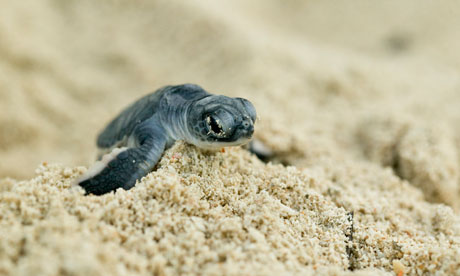Turtle news from the other side of the world, published in The Guardian on 12/11/2010 by Alok Jha
Study reveals enormous levels of illegal turtle harvesting in Madagascar
 |
| A green turtle hatchling. Photograph: Joe McDonald/Corbis |



